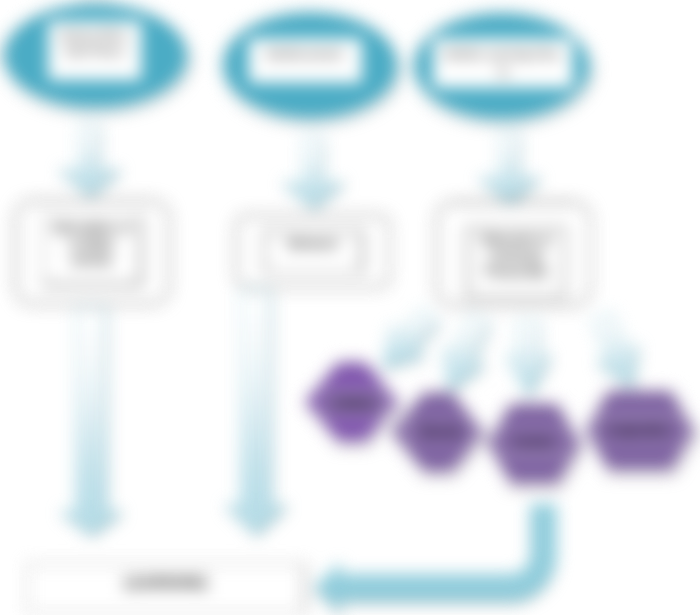Chapter 2
REVIEW OF RELATED LITERATURE AND STUDIES
This chapter presents a review of related literature and studies that are relevant to the study at hand. It also includes the synthesis of the state of the art, gap-bridge by the study, theoretical framework and paradigm, conceptual framework and paradigm and definition of terms.
Related Literature
An overview of literature having significance and relevance to the present study are presented and discussed here under. These literatures are taken from various website database, journals and books of foreign and local authors.
Schools need to put more effort into evaluating what makes effective teaching, and ensure that discredited practices are rooted out from classrooms, according to a new study published by the Sutton Trust and Durham University. The study suggests that some schools and teachers continue using methods that cause little or no improvement in student progress. They instead rely on anecdotal evidence to back fashionable techniques such as “discovery learning,” where pupils are meant to uncover key ideas for themselves, or “learning styles,” which claims children can be divided into those who learn best through sight, sound or movement.
Instead, more traditional styles that reward effort use class time efficiently and insist on clear rules to manage pupil behaviour, are more likely to succeed, according to the report – touching on a raw nerve within the British teaching profession, which has seen vigorous debates between “progressive” and “traditional” best practice
In most part of our country, traditional teaching methods are used in the educational institutions. In the traditional teaching methods, teachers illustrate the concepts to students with the help of chalks and blackboard. Very important thing regarding the topic is written on the board and students make important notes from the board. The main objective of traditional teaching is to pass the examination. Traditional teaching system has its own merits and demerits.
Traditional teaching methods used in educational institutions have many advantages. These advantages can also be a disadvantage to the modern teaching method. Its advantages are the following: (1) it is cheaper that of the modern teaching method; (2) some subjects like Mathematics and Chemistry are best taught in the blackboard as there is a need of explaining the concept at every step; (3) there is more interaction between the teacher and the student. We can also sat that there is more discipline here in class; (4) teachers does not require any special technical knowledge and can focus more on his subject for imparting the best knowledge to the students; (5) it doesn’t put any strain in the eyes of students whereas modern teaching methods can adversely affect the eyes of the students.
Older, more traditional forms of learning resonate with students because they connect with something deep within our human psyche. They engage the full person, not just the part of the brain that can decipher words on a page. They evoke a time when all of our ancestors were more alike than different in their cultural practices.
Learning through movement and the senses is becoming easier to do as bulky, stationary technology has become more mobile. Also, we are seeing the beginnings of a trend in which technology is becoming practically invisible and more integrated into our everyday environments. Digital technology such as tablets can help teachers and students rediscover traditional ways of learning by using touch, movement, sound, and visualization.
The oral tradition of teaching is not just about speaking out loud, but how one speaks and the narrative style used to convey meaning. It is how we shared our first stories and philosophical ideas.
Traditional learning programs utilize the long-established technique of on-campus classroom meetings for delivering course information and facilitating student conversation and debate. Students meet at an assigned time and place to partake in class lectures, labs, study groups and exams. Traditional learning environments are more structured than distance learning programs and provide face-to-face contact with fellow students and professors.
Theories of Learning
· Sensory Stimulated Theory (Laird, 1985)
Effective learning occurs when the senses are stimulated. The theory states that when multi senses are stimulated, greater learning takes place. The theory has had an excellent appreciation among teachers, particularly those dealing with young children in the pre-school and primary senior.
· Reinforcement Theory
This is the belief that behaviour is a function of its consequences. Learners will repeat the desired behaviour if positively reinforced. Positive reinforcement, rewards, certificate, etc; as well as negative reinforcement can also strengthen behaviour when a negative condition is stopped or avoided. Parents and teachers alike have adopted this theory which still has many well-wishers.
· Holistic Learning Theory
This theory rests on the premises that the individual personality consists of many elements, specifically, the intellect, emotions, impulse or desire, intuition and imagination that all require activation if learning is to be more effective.
Related Studies
. Professor Robert Coe of Durham University, one of the authors, said assessing effective teaching was difficult, because exactly how pupils learn remains a mysterious subject. “It is surprisingly difficult for anyone watching a teacher to judge how effectively students are learning. We all think we can do it, but the research evidence shows that we cannot. Anyone who wants to judge the quality of teaching needs to be very cautious,” Coe said.
Traditional knowledge may be holistic in outlook and adaptive by nature, gathered over generations by observers whose lives depended on this information and its use. It often accumulates incrementally, tested by trial-and-error and transmitted to future generations orally or by shared practical experiences (Ohmagari and Berkes 1997). Obviously, not all traditional practice and belief systems were ecologically adaptive in the first place; some became maladaptive over time due to changing conditions. Not all-traditional practice is ecologically wise. For example, Diamond (1993) notes that even though New Guinea natives possess detailed knowledge of plants and animals, some of the groups had, and continue to have, a heavy impact on their native biota. We do not wish to enter into the debate over aboriginal conservation, but suffice to say, exaggerated claims on behalf of traditional ecological wisdom require a reality check (Chapin 1988, Redford and Stearman 1993). In any case, indigenous notions of conservation are fundamentally different from those of Western conservationists (Alcorn 1993, Dwyer 1994, Roberts et al. 1995).
A system was created, the sound education system, which is the pre-requisite for the development of any nation. This is a well-known fact that our education system still relies on the traditional teaching with modern teaching aids for a better and advanced education system. There is a difference in the opinion of the people regarding the use of traditional and modern teaching methods. Some people say that traditional teaching methods are best for imparting the education on students while some favour that we should use modern teaching methods for giving quality education. Both traditional and modern teaching methods should be simultaneously for the betterment of education.
One of the ways that we have long learned about the world around us is by direct observation. However, when we place a higher emphasis on reading as a direct source of knowledge, we indirectly affect our ability to learn by observation, and overall, inhibit our ability to learn visually.
Recent studies out of Brown University show that gamers have a higher capacity for visual learning than do non-gamers. Teachers have taught students to better understand light, shadow, and color through digital photography and Photoshop. Developing observational skills by using interactive visual technology, as well as digital photography, 3D modelling, and video assignments allow students to better understand their real-world environment.
Embracing digital technology that uses sight, sound, touch, and movement is a terrific way of rediscovering traditional cultural practices and will help us better educate the whole child.
Synthesis of the State-of-the-Art
The related literature and studies reviewed by the researcher gave a clear view of the present study. They provided the most basic principles related to the current research. The literature viewed dealt with the traditional ways of learning that the students can perform. There are 3 theories presented in the related literature that became essential to the current research. They created ways on how learning can be done as well as gave the importance of it. In addition, teachers play an important part in promoting traditional way of learning.
On the other hand, the related studies revealed that learning could be done through the senses such as with the study of Robert Coe and the Brown University. Learning can also be done through personal experiences which is based from Ohmagari and Berkes, 1997. Another study confirms that social environment contributes to the learning capacity of a student.
Gap Bridged by the Study
Through analysis of the studies reviewed, it showed that a number of studies in traditional way of learning had been undertaken. Most studies dealt with the ways on how traditional learning can be performed and can be used as a method of learning. Some studies did work to distinguish and to analyze traditional way of learning and errors to formulate remedial instruction for creative measures.
It can be inferred logically from the related literature and studies that traditional way of learning need not to be taken for granted, that it must be given enough emphasis and attention for more intelligible and effective way of learning. It is further noted that no study had ever been conducted on the traditional way of learning among Grade 12-STEM Students of Marcial O. Rañola Memorial School. The present study will serve as the diagnosis for the improvement of learning of the students in school. The inadequacies of the students in effective way of learning would be given remedy through the proposed activities while they are still in school. These are the gaps that the present studies have bridged.
Theoretical Framework
The present study is supported and further analyzed through the following theories: Sensory stimulated theory - Effective learning occurs when the multi senses are stimulated causing to have a greater degree of learning. The theory has had an excellent appreciation among teachers, particularly those dealing with young children in the pre-school and primary senior. Reinforcement theory -The behavior matters in this theory. Learners will repeat the desired behavior if positively reinforced. Parents and teachers alike have adopted this theory which still has many well-wishers Holistic Learning Theory- This theory rests on the premises that the individual personality consists of many elements such as intellect, emotions, impulse of desire, intuition and imagination that all require activation if learning is to be more effective.

References:
Ø https://www.theguardian.com/education/2014/oct/31/education-traditional-teaching-versus-progressive
Ø https://www.igi-global.com/dictionary/traditional-learning/30346
Ø https://tomprof.stanford.edu/posting/1505
Ø http://www.indiastudychannel.com/resources/146615-Teaching-with-modern-and-traditional-methods.aspx
Ø https://onlinelearninginsights.wordpress.com/tag/traditional-education-methods/
Ø https://elearningindustry.com/traditional-vs-modern-learning-systems
Ø http://johnlatham.me/frameworks/research-methods-framework/conceptual-framework/
Ø https://www.ncbi.nlm.nih.gov/pmc/articles/PMC3975717/
Ø https://www.google.com.ph/search?q=studies+about+traditional+ways+of+learning&client=ms-opera-mini-android&channel=new&gws_rd=cr,ssl&ei=U4mAWcSXOs68jwPWh6q4BQ
Ø https://www.google.com.ph/search?q=advantages+of+traditional+way+of+learning&client=ms-opera-mini-android&channel=new&gws_rd=cr,ssl&ei=u4iAWdP3H4LwjwO2lqHIBQ
Ø https://www.useoftechnology.com/what-is-technology/
Good Evening. If you haven't read the first part, just click Chapter 1. Godbless!!!
